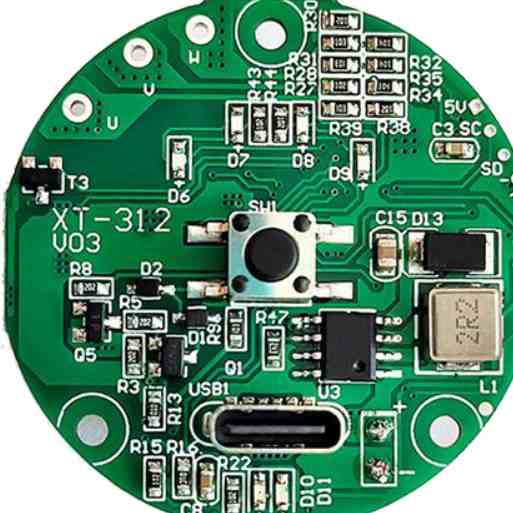
What is a ground wire? The definition of a ground wire that you learn in your textbook is: A ground wire is an equipotential body that acts as a reference point of a circuit potential. This definition is not in line with the actual situation. The potential on the actual ground wire is not constant. If a meter is used to measure the potential between the points on the ground line, it will be found that the potential of the points on the ground line may vary greatly. It is these potential differences that cause the circuit to work abnormally. The definition of a circuit as an equipotential body is just what one would expect from a ground potential. HENRY gave a more practical definition of a ground wire. He defined a ground wire as a low impedance path through which a signal flows back to the source. This definition highlights the flow of electric current in a ground wire. With this definition, it is easy to understand the potential difference in ground wires. Because the impedance of a ground wire is never zero, a voltage drop occurs when a current passes through a finite impedance. So we should think of the potential on a ground wire as rising and falling like waves in the sea.
Talking about the impedance of ground wire caused by the potential difference between points on the ground wire can cause circuit misoperation, many people think it is incredible: we use an ohmmeter to measure the resistance of ground wire, ground wire resistance is usually in milliohm level, how can the current flow through such a small resistance can produce such a large voltage drop, resulting in abnormal circuit work.
Ground interference mechanism, common impedance interference When two circuits share a ground wire, the ground potential of one circuit will be modulated by the operating current of the other circuit due to the impedance of the ground wire. A signal in such a circuit is coupled to another circuit. This coupling is called common impedance coupling.
In digital circuits, ground wires tend to exhibit a larger impedance due to the higher frequency of the signal. In this case, if there are different circuits sharing a ground line, the problem of common impedance coupling may arise
Ground interference countermeasure and ground loop countermeasure According to the mechanism of ground loop interference, the ground loop interference can be reduced as long as the current in the ground loop is reduced. If the current in the ground loop can be completely eliminated, the problem of ground loop interference can be completely solved. So we put forward the following solutions to the ground loop interference.
A. Float one end of the device If you float one end of the circuit to the ground, you cut off the ground loop, so you can eliminate the ground loop current. But there are two problems to be noted, one is that for safety reasons, the circuit is often not allowed to float. Consider grounding the device through an inductor. In this way, the ground impedance of the equipment is small for 50Hz AC current, while the ground impedance of the equipment is large for interference signals with higher frequencies, which reduces the ground loop current. But this can only reduce the ground loop interference of high frequency interference. Another problem is that even though the device floats, there is a parasitic capacitance between the device and the ground. This capacitance provides a low impedance at higher frequencies and is therefore not effective in reducing the high frequency ground loop current.
B. Use transformers to connect devices. Use magnetic circuits to connect two devices, which can cut off the ground loop current. However, it should be noted that the parasitic capacitance between the primary stages of the transformer can still provide a path for the ground loop current with higher frequency, so the transformer isolation method has poor suppression effect on the high frequency ground loop current. One way to improve the high frequency isolation effect of a transformer is to install a shield between the primary stages of the transformer. But it must be noted that the grounding end of the isolating transformer shield must be at one end of the receiving circuit. Otherwise, not only can not improve the high frequency isolation effect, but also may make the high frequency coupling more serious. Therefore, the transformer should be installed on the side of the signal receiving equipment. A well-shielded transformer can provide effective isolation at frequencies up to 1MHz.
C. Use optical isolators Another way to cut off the ground loop is to use light to achieve signal transmission. It can be said that this is the most ideal method to solve the ground loop interference problem. There are two methods of optical connection, one is the optocoupler, the other is the fiber connection. The parasitic capacitance of the optocoupler is generally 2pf, which can provide good isolation at very high frequencies. Optical fiber has almost no parasitic capacitance, but installation, maintenance, cost, and other aspects of the optocoupler.
D. Use a common-mode choke The use of a common-mode choke on the connecting cable is equivalent to increasing the impedance of the ground loop, so that under a certain ground voltage, the ground loop current will be reduced. But attention should be paid to the parasitic capacitance of the common mode choke, otherwise the isolation effect of high frequency interference is very poor. The larger the number of turns of common mode choke, the larger the parasitic capacitance and the worse the effect of high frequency isolation.







